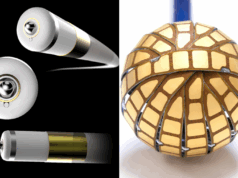 People who made even small increases in their daily physical activity levels after receiving an implantable cardioverter defibrillator (ICD) experienced fewer incidences of hospitalisation and had a decreased risk of death, according to research published in Circulation: Cardiovascular Quality and Outcomes.
People who made even small increases in their daily physical activity levels after receiving an implantable cardioverter defibrillator (ICD) experienced fewer incidences of hospitalisation and had a decreased risk of death, according to research published in Circulation: Cardiovascular Quality and Outcomes.
According to American Heart Association’s Heart Disease and Stroke Statistics‒2021 Update, there were 60,000 ICD procedures in the USA in 2014, the most recent data available.
“Cardiac rehabilitation programs offer patients a safe environment to increase physical activity after ICD implantation. Evidence has also shown cardiac rehab lessens the risk of additional hospitalisation and death, but cardiac rehabilitation programs are underutilised, especially among women, the elderly, people from diverse racial and ethnic groups and those living in rural areas,” said study author Brett D Atwater, director of electrophysiology and electrophysiology research at Inova Heart and Vascular Institute in Fairfax, USA. “The causes of underutilisation are a combination of providers failing to prescribe and patients being unwilling to participate because of the time requirements for participation, the travel to and from the rehab facility and out of pocket costs associated with that.
“Our study examined whether physical activity outside of a formal cardiac rehabilitation program could yield similar benefits, and we found it did,” he said. “This suggests that additional options like home-based cardiac rehabilitation might help more patients realise the health benefits of increased physical activity.”
While previous studies have shown that heart attack patients were 53% less likely to die if they participated in cardiac rehabilitation, only about one-third of heart attack patients participate in formal programs after they are discharged from the hospital. “Cardiac rehabilitation participation is lower among patients with heart failure, with recent studies reporting only 2.7% of eligible Medicare beneficiaries with heart failure participated in cardiac rehabilitation,” Atwater explained.
Researchers reviewed health and physical activity information for nearly 42,000 Medicare beneficiaries who had ICDs implanted between January 1, 2014, and December 31, 2016, assessed through the Centers for Medicare and Medicaid Services (CMS) Virtual Research Data Center. The patients were average age 75; 72% male; and about 90% of participants were white. Sensors in the ICDs measured the participant’s motion and heart rate in order to detect physical activity. For physical activity to be logged by the ICD, sensors needed to note both physical movement and heart rate values higher than the patient’s individualised values at rest.
“In this study, any physical activity counted towards daily totals, as long as the patient was moving and the heart rate increased at the same time,” Atwater said. “Prior work shows that simple activities of daily living such as walking around the house or doing the dishes, count toward these totals and can improve health compared to sitting still.”
The researchers found that only 3% of the patients who received ICDs during the study period participated in a cardiac rehabilitation programme, while participants who had cardiac rehabilitation increased physical activity by nearly 10 minutes daily during their cardiac rehabilitation sessions, compared to a decrease of one minute a day among those not enrolled in a cardiac rehabilitation programme.
Those who participated in a cardiac rehabilitation program were 24% less likely to die during the one to three years after ICD implantation compared to those who did not have cardiac rehabilitation.
Every 10 minutes of increased daily physical activity was associated with a 1.1% reduction in death from all causes among all patients in this analysis. After adjusting for the increased physical activity observed during cardiac rehabilitation, reductions in death rates were the same between those who did and did not participate in cardiac rehabilitation if they increased physical activity.
“This finding helps confirm prior research showing that cardiac rehabilitation is underutilised, and the benefits of increased physical activity obtained in cardiac rehabilitation programs also may be achievable at home, potentially offering another opportunity to improve outcomes in patients with ICDs,” Atwater said.
The current American College of Cardiology (ACC)/American Heart Association (AHA) guidelines recommend comprehensive cardiac rehabilitation for patients with heart failure because it improves the heart’s functional capacity and the patient’s quality of life, while also reducing the risk of hospital readmission for patients with heart failure with reduced heart pumping ability. Cardiac rehabilitation is also recommended for heart attack survivors and patients who have recently had percutaneous coronary intervention (PCI) or bypass surgery.
Cardiac rehabilitation reduces rehospitalisation, death in ICD recipients
A limitation of the study is its retrospective design, using prior health information. Additional prospective research that follows patients through ICD implantation and monitors their physical activity in the years after the procedure is needed to confirm if increasing physical activity at home can safely reduce the risks of death or hospitalisations.









